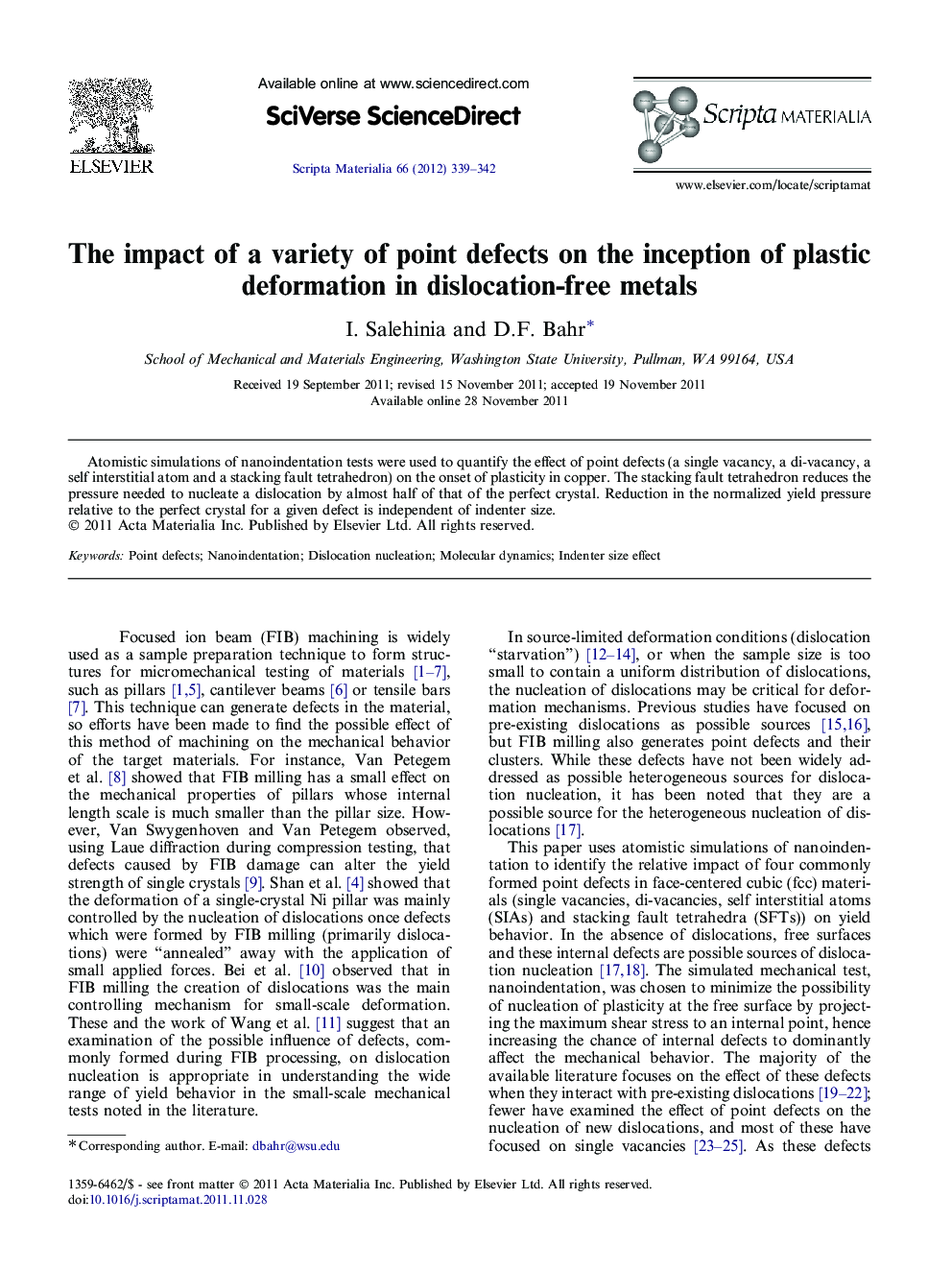| Article ID | Journal | Published Year | Pages | File Type |
|---|---|---|---|---|
| 1500020 | Scripta Materialia | 2012 | 4 Pages |
Abstract
Atomistic simulations of nanoindentation tests were used to quantify the effect of point defects (a single vacancy, a di-vacancy, a self interstitial atom and a stacking fault tetrahedron) on the onset of plasticity in copper. The stacking fault tetrahedron reduces the pressure needed to nucleate a dislocation by almost half of that of the perfect crystal. Reduction in the normalized yield pressure relative to the perfect crystal for a given defect is independent of indenter size.
Related Topics
Physical Sciences and Engineering
Materials Science
Ceramics and Composites
Authors
I. Salehinia, D.F. Bahr,
